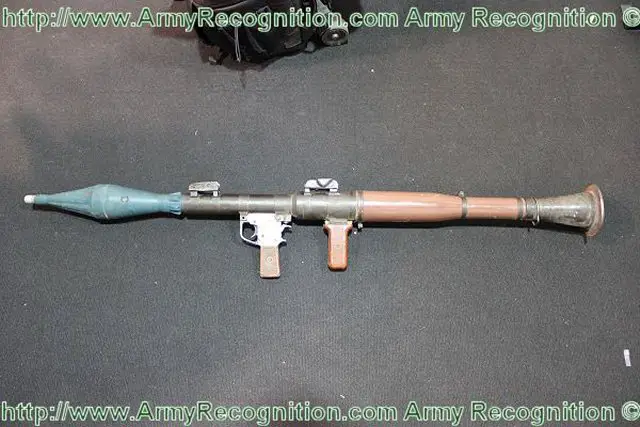Breaking news
Russian RPG-7 antitank rocket launcher has been produced in over 9 million examples since 1961.
| 2016
|
|
|||
|
Defence & Security News - Russia
|
|||
|
|
|||
| Russian RPG-7 antitank rocket launcher has been produced in over 9 million examples since 1961 | |||
|
Over 9 million examples of the RPG-7 shoulder-fired antitank rocket launcher have been made since the type entered service with the Soviet Army in 1961. The weapon is used by the armed services of more than 100 countries and virtually by all illegal armed groups. However, a considerable number of the earlier-made RG-7 rockets of the V, VM, VS and VS Luch series are no longer up to standard.
|
|||
|
|
|||
 RPG-7 antitank rocket launcher RPG-7 antitank rocket launcher |
|||
|
|
|||
|
They are no longer lethal to up-to-date tanks clad in layered armor, explosive reactive armor, slat armor, you name it. On the other hand, they remain effective against both exposed and sheltered manpower. There are several upgrade variants to enhance the RG-7V rocket’s lethality against targets like that.
The easiest option is the prefabricated fragment case placed upon the rocket around the area where the explosive charge is, which increases the exposed manpower kill zone. The principle has been relied on for some time now. Take for example the RG-33 with the prefabricated fragment case attached when it is used in defense. While such a weapon poses a certain risk to the user, the upgrade of the RG-7 makes the risk virtually nonexistent owing to the rocket’s range. The rocket retains its shaped-charge effect, to boot. The second variant is more formidable owing to an extra high-explosive charge embedded with the shaped-charge cone. In this case, the prefabricated fragmentation liner may be heavier, increasing both the high-explosive and frag effects. However, the rocket will cease to be a shaped-charge one, thus becoming unfit for killing armored targets. The same concept is applicable in case of a similar upgrade of the first-generation Malyutka and Falanga antitank guided missile systems. By the way, attempts were made during the Chechen armed conflict to increase their lethality against manpower and other targets with the use of makeshift solutions. The shaped-charge cone would be filled with a mix of 600 grams of the high explosive and 1,150 grams of chopped wire. Certainly, makeshift solutions like that are dangerous, but the idea was good and still is worth looking into by engineers. However, this is only half a problem. The other half of the upgrade work is to develop simple quickly-detachable sights taking into account the change in the ballistics of upgraded - hence, heavier and larger - rockets. The implementation of these proposals will boost the frag and high-explosive effects of the RPG-7’s rockets and ATGM systems’ missiles at minimal cost and will return to the inventory the numerous decommissioned mothballed munitions that otherwise would have to be disposed of upon their shelf life expiry. The Russian Air Force using in the Syrian conflict its old gravity bombs, which circular error probable (CEP) has been brought close enough to the CEP of precision-guided munitions with the use of the SVP-24 instrument, proves the feasibility of using the considerable stockpiles of other obsolete weapons owing to the outside-of-the-box thinking and latest solutions. This not only saves a lot of money, but also allows making use of written-off munitions while enhancing their lethality. |
|||
|
|
|||
|
© Copyright 2016 TASS. All rights reserved. This material may not be published, broadcast, rewritten or redistributed.
|
|||


























